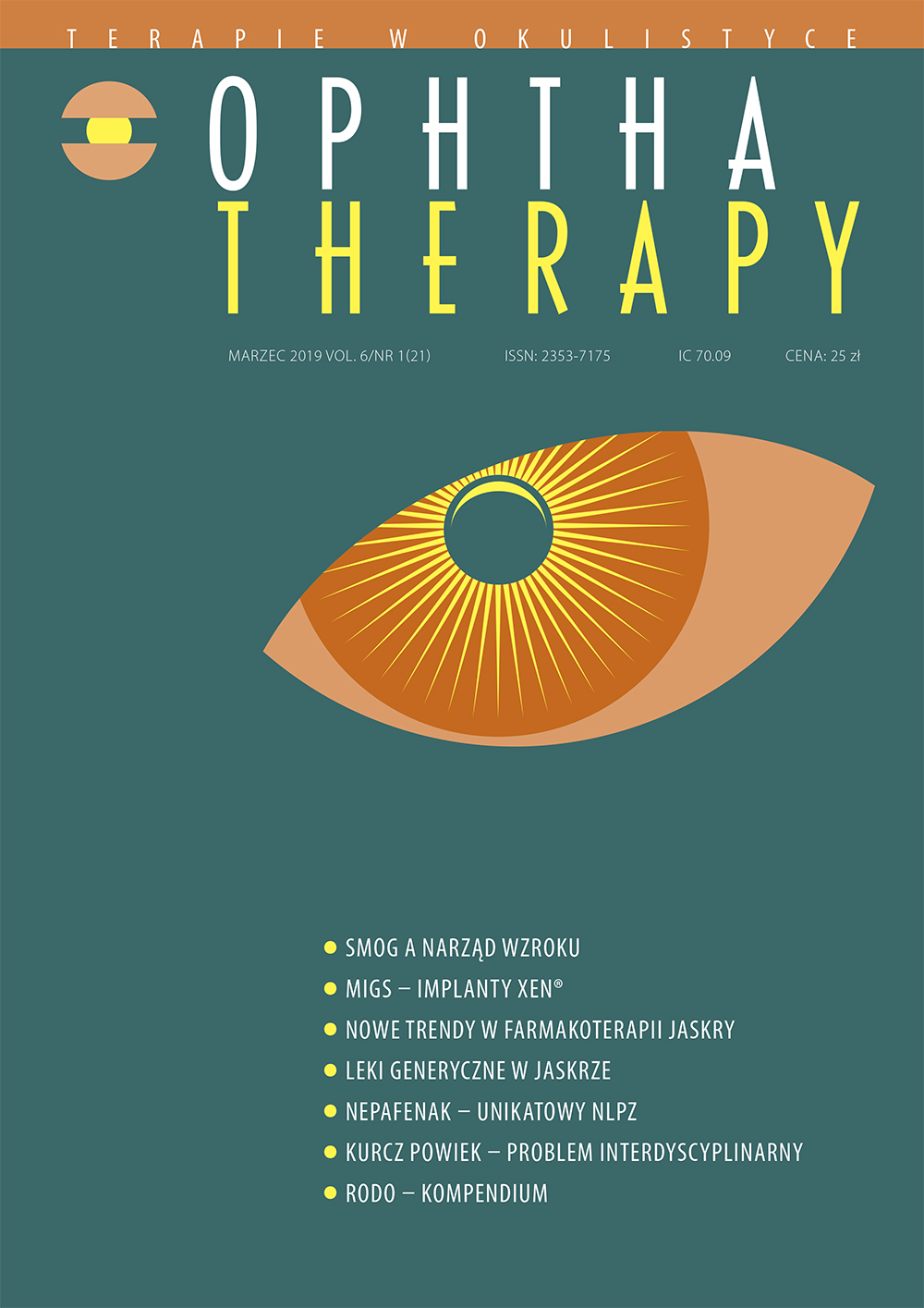Jaskra i leki generyczne w Europie
##plugins.themes.bootstrap3.article.main##
Abstrakt
Oryginalne leki i leki generyczne stosowane w jaskrze różnią się od siebie. Może to prowadzić do gorszej tolerancji na leki i w rezultacie do pogorszenia przestrzegania zaleceń przez pacjentów. Dlatego istotną kwestią jest, oprócz skuteczności leku, jego optymalna tolerancja ze strony pacjenta. Ewentualne różnice w lepkości, pH, wielkości kropli i napięciu powierzchniowym mogą mieć istotny wpływ na dostarczanie aktywnej cząsteczki do receptorów w oku i jej klinicznie istotną skuteczność. Różnice te, poza różnym wyglądem i obsługą „nowej” butelki, mogą powodować problemy z przestrzeganiem zaleceń przez pacjentów w przypadku zastosowania nowego preparatu.
Pobrania
##plugins.themes.bootstrap3.article.details##

Utwór dostępny jest na licencji Creative Commons Uznanie autorstwa – Użycie niekomercyjne – Bez utworów zależnych 4.0 Międzynarodowe.
Copyright: © Medical Education sp. z o.o. License allowing third parties to copy and redistribute the material in any medium or format and to remix, transform, and build upon the material, provided the original work is properly cited and states its license.
Address reprint requests to: Medical Education, Marcin Kuźma (marcin.kuzma@mededu.pl)
Bibliografia
2. Center for Drug Evaluation and Research. Guidance for Industry: Bioavailability and Bioequivalence Studies for Orally Administered Drug Products – General Considerations. U.S. Department of Health and Human Services Food and Drug Administration 2003.
3. Committee for Medicinal Products for Human Use. Guideline on the Investigation of Bioequivalence. European Medicines Agency 2010. Online: http://www.ema.europa.eu/docs/en_GB/document_library/Scientific_guideline/2009/09/WC500003388.pdf.
4. Holló G, Hommer A. Delivery of Glaucoma Care Committee of the European Glaucoma Society. The status of glaucoma diagnostics and care in Europe in 2015: a European survey. Eur J Ophthalmol. 2016; 26(3): 216-20. https://doi.org/10.5301/ejo.5000699.
5. Kahook M, Fechtner RD, Katz LJ et al. A comparison of active ingredients and preservatives between brand name and generic topical glaucoma medications using liquid chromatography-tandem mass spectrometry. Curr Eye Res. 2012; 37(2): 101-8. https://doi.org/10.3109/02713683.2011.631722.
6. Leitritz MA, Lipp HP, Voykov B et al. Original preparations versus generics – latanoprost: how similar is different? Ophthalmologe. 2015; 112(2): 127-39. https://doi.org/10.1007/s00347-014-3097.
7. Mammo ZN, Flanagan JG, James DF et al. Generic versus brand-name North American topical glaucoma drops. Can J Ophthalmol. 2012; 47(1): 55-61. https://doi.org/10.1016/j.jcjo.2011.12.004.
8. OECD/EU. Health at a Glance: Europe 2014. OECD Publishing, Paris 2014. Online: https://doi.org/10.1787/health_glance_eur-2014-en.
9. Rossetti L, Digiuni M, Giovanni M et al. Blindness and Glaucoma: A Multicenter Data Review from 7 Academic Eye Clinics. PLoS One. 2015; 10(8): e0136632. https://doi.org/10.1371/journal.pone.0136632.
10. Quigley HA. Number of people with glaucoma worldwide. Br J Ophthalmol. 1996; 80: 389-93.
11. Online: https://www.eugs.org.

